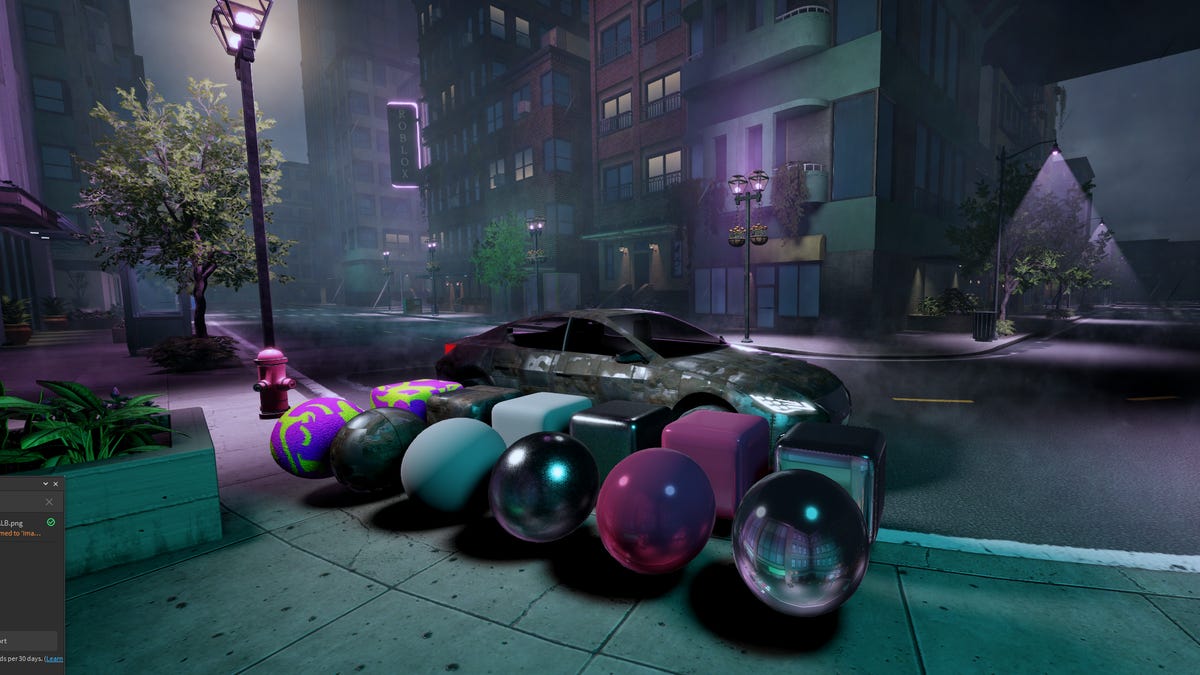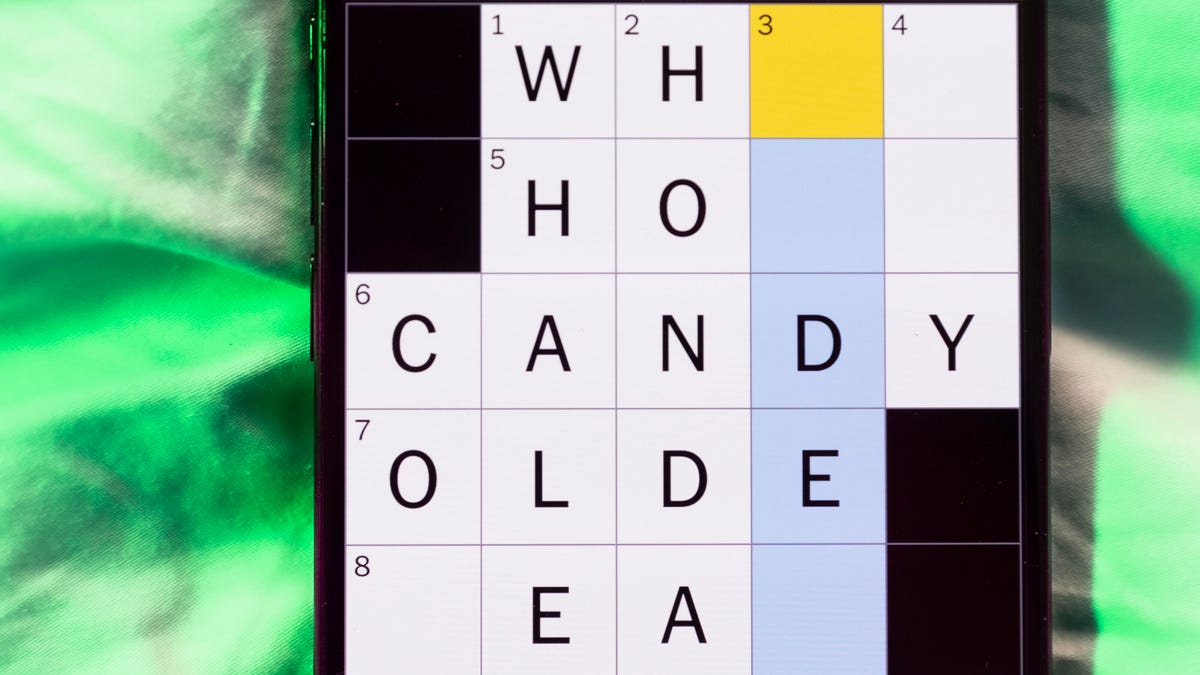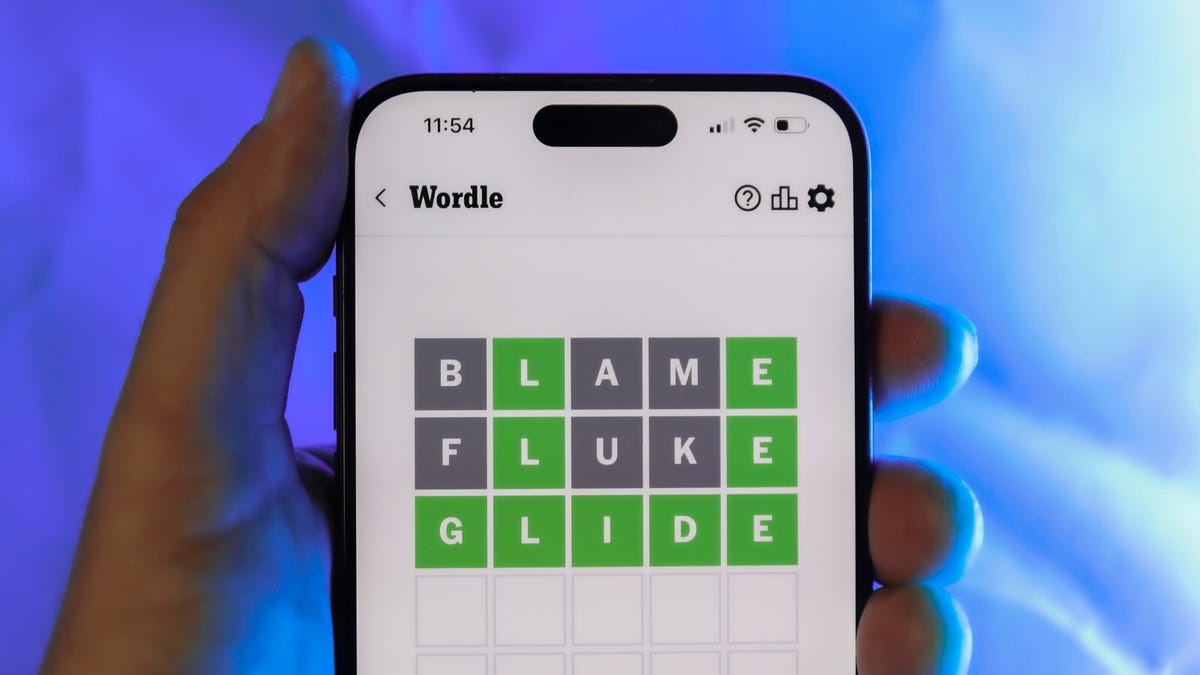Technologies
Roblox and its Generative AI: How Game Creation, and the Metaverse, May Be Changing
Two new creative tools are the start of possibly a lot more.

The world’s biggest metaverse may, arguably, be Roblox. The platform my kids play almost daily is a continuous playground of increasingly evolving experiences with a vast marketplace. It’s also going to become a space where generative AI emerges. Roblox released two new AI tools in the past week, but both are only showing up in the creator-focused Roblox Studio: a coding tool that lets anyone use conversational AI to generate code on the fly; and a way to create material designs just by describing what you want.
I watched demos of the new Roblox tools in action, and they’re very much in line with what generative AI tools like Midjourney, DALL-E 2 and ChatGPT can already do, as Microsoft and Google have expanded these tools elsewhere. In the case of Roblox, however, these tools are focused on particular uses. Both of the tools are also, for the moment, separate from each other and trained differently.
Beyond conversational AI and rapidly evolving art tools, it’s the way AI is moving into being a copilot for coding that grabs me the most. I don’t know how to code, and I’ve often found game creation tools, even ones like Sony’s Dreams on PlayStation, to be intimidating. It looks very much like this emerging wave of AI is turning into a coding assistant… I’d hesitate to say complete coding tool, because it sounds like you’d very much want to see what errors and results come from whatever you think you’ve discussed into being. But much more so than in any other capacity, it looks like a way to quickly enable complicated creations.
Stefano Corazza, former VP of Adobe’s Augmented Reality division and now head of Roblox Studio, says Roblox’s new AI features are targeted at «someone who is familiar with coding, and we just want to make them more productive.» But another initiative is coming for complete creative newcomers, too.
«We also have a parallel effort to help people that are completely new to coding,» Corazza says. «But if you are targeting people that are completely new to coding, we may need a different type of interface like ChatGPT that are a little bit more useful, because they explain to you what the code does, and then they write the code, and then they help you debug things. So I think we will have to think about an approach where the goal is learning, as opposed to writing a bunch of code.»
I’m curious about when these tools will emerge in the everyday Roblox app. There are already developers hooking in ChatGPT into Roblox now, but Roblox aims to eventually have some of these creative tools come outside of Studio.
«I think generative AI is really easier onboarding in the game development space overall, where people are less sophisticated in terms of, ‘Hey, I need something that gives me like, the Absolute Truth,’ right? It’s more of an iterative process,» Corazza says.


Is Roblox readying its platform to be able to more spontaneously generate worlds?
RobloxSomeday, players may have these generative AI tools right inside Roblox. And along with that future possibility comes parental guidance concerns.
«In the future as this becomes a superpower of players, we will have to implement more real-time moderation. It also needs to be not only age appropriate, but also context appropriate. Things that you may say with your close group of friends may not be OK in a public setting, for example, or during a concert on Roblox. We are trying to develop a more contextual type of moderation because we think that will be a big deal in the future,» Corazza adds.
Coding and creation is the focus now, but what I see after that is how these quick AI assistants can generate environments on the fly for metaverse environments. The «build and someone will come» idea behind large social VR worlds like Meta’s Horizon Worlds and AltSpace VR haven’t worked. Will more instantaneous AI-driven invocations be a way to make future AR and VR feel like an instant holodeck?
«I think what we have seen is a transformation where a lot of the strictly technical skills will be picked up by AI, and then it will leave creators more high-level controls,» Corazza says. «We will enable a lot more people to just manifest their ideas in the metaverse.»
Corazza refers to Roblox’s own metaverse, and its hundreds of millions of users, as an example. «Until now, just the scale of content that was needed was not met,» Corazza says, referring to metaverse platforms. «Very few companies in the world could actually afford it. If we lower the barrier, and now everybody can generate a city by just saying ‘create the city of San Francisco, it’s sunset and it’s raining,’ and poof, you see the city in front of you, the cost of creation gets really low, then people can start doing really fun things and can experiment.»
Roblox isn’t actively in VR and AR yet, although Corazza says the company’s exploring many different types of platforms. But it’s pretty clear that these beginning steps for generative AI in 3D worlds are going to make a big impact on the metaverse, VR and AR soon enough.
«VR was always starving for content, right? It was like, a great game was made, and then it’s like, ‘OK, try to make an experience, you know, good luck.’ That has been a very difficult process. There was one inflection with user-generated content that was really powerful, and then the second inflection point, now that we are seeing with generative AI, is going to be another order of magnitude of how much content is available,» Corazza adds. «Even things like VR and AR will flourish, will really have like a second wave. Because now people can do stuff in those worlds and they can be much faster. I think that’s going to be a big game-changer.»
Editors’ note: CNET is using an AI engine to create some personal finance explainers that are edited and fact-checked by our editors. For more, see this post.
Technologies
Today’s NYT Mini Crossword Answers for Wednesday, Dec. 24
Here are the answers for The New York Times Mini Crossword for Dec. 24.

Looking for the most recent Mini Crossword answer? Click here for today’s Mini Crossword hints, as well as our daily answers and hints for The New York Times Wordle, Strands, Connections and Connections: Sports Edition puzzles.
Need some help with today’s Mini Crossword? I’m Irish-American, but yet 6-Down, which involves Ireland, stumped me at first. Read on for all the answers.. And if you could use some hints and guidance for daily solving, check out our Mini Crossword tips.
If you’re looking for today’s Wordle, Connections, Connections: Sports Edition and Strands answers, you can visit CNET’s NYT puzzle hints page.
Read more: Tips and Tricks for Solving The New York Times Mini Crossword
Let’s get to those Mini Crossword clues and answers.
Mini across clues and answers
1A clue: Wordle or Boggle
Answer: GAME
5A clue: Big Newton
Answer: ISAAC
7A clue: Specialized vocabulary
Answer: LINGO
8A clue: «See you in a bit!»
Answer: LATER
9A clue: Tone of many internet comments
Answer: SNARK
Mini down clues and answers
1D clue: Sharks use them to breathe
Answer: GILLS
2D clue: From Singapore or South Korea, say
Answer: ASIAN
3D clue: Large ocean ray
Answer: MANTA
4D clue: ___ beaver
Answer: EAGER
6D clue: Second-largest city in the Republic of Ireland, after Dublin
Answer: CORK
Don’t miss any of our unbiased tech content and lab-based reviews. Add CNET as a preferred Google source.
Technologies
Quadrantids Is a Short but Sweet Meteor Shower Just After New Year’s. How to See It
This meteor shower has one of the most active peaks, but it doesn’t last for very long.

The Quadrantids has the potential to be one of the most active meteor showers of the year, and skygazers won’t have long to wait to see it. The annual shower is predicted to reach maximum intensity on Jan. 3. And with a display that can rival Perseids, Quadrantids could be worth braving the cold to see it.
Don’t miss any of our unbiased tech content and lab-based reviews. Add CNET as a preferred Google source.
The show officially begins on Dec. 28 and lasts until Jan. 12, according to the American Meteor Society. Quadrantids is scheduled to peak on Jan. 2-3, when it may produce upwards of 125 meteors per hour. This matches Perseids and other larger meteor showers on a per-hour rate, but Quadrantids also has one of the shortest peaks at just 6 hours, so it rarely produces as many meteors overall as the other big ones.
The meteor shower comes to Earth courtesy of the 2003 EH1 asteroid, which is notable because most meteor showers are fed from comets, not asteroids. Per NASA, 2003 EH1 is a near-Earth asteroid that orbits the sun once every five and a half years. Science posits that 2003 EH1 was a comet in a past life, but too many trips around the sun stripped it of its ice, leaving only its rocky core. The Earth runs through EH1’s orbital debris every January, which results in the Quadrantids meteor shower.
How and where to see Quadrantids
Quadrantids is named for the constellation where its meteors appear to originate, a point known as the radiant. This presents another oddity, as the shower originates from the constellation Quadrans Muralis. This constellation ceased to be recognized as an official constellation in the 1920s and isn’t available on most publicly accessible sky maps.
For the modern skygazer, you’ll instead need to find the Bootes and Draco constellations, both of which contain stars that were once a part of the Quadrans Muralis. Draco will be easier to find after sunset on the evening of Jan. 2, and will be just above the horizon in the northern sky. Bootes orbits around Draco, but will remain under the horizon until just after 1 a.m. local time in the northeastern sky. From that point forward, both will sit in the northeastern part of the sky until sunrise. You’ll want to point your chair in that direction and stay there to see meteors.
As the American Meteor Society notes, Quadrantids has a short but active peak, lasting around 6 hours. The peak is expected to start around 4 p.m. ET and last well into the evening. NASA predicts the meteor shower to start one day later on Jan. 3-4, so if you don’t see any on the evening of Jan. 2, try again on Jan. 3.
To get the best results, the standard space viewing tips apply. You’ll want to get as far away from the city and suburbs as possible to reduce light pollution. Since it’ll be so cold outside, dress warmly and abstain from alcoholic beverages, as they can affect your body temperature. You won’t need any binoculars or telescopes, and the reduced field of view may actually impact your ability to see meteors.
The bad news is that either way, the Quadrantids meteor shower coincides almost perfectly with January’s Wolf Moon, which also happens to be a supermoon. This will introduce quite a lot of light pollution, which will likely drown out all but the brightest meteors. So, while it may have a peak of over 100 meteors per hour, both NASA and the AMS agree that the more realistic expectation is 10 or so bright meteors per hour.
Technologies
Today’s Wordle Hints, Answer and Help for Dec. 24, #1649
Here are hints and the answer for today’s Wordle for Dec. 24, No. 1,649.

Looking for the most recent Wordle answer? Click here for today’s Wordle hints, as well as our daily answers and hints for The New York Times Mini Crossword, Connections, Connections: Sports Edition and Strands puzzles.
Today’s Wordle puzzle is a little tricky, with a double letter that could confuse players. If you need a new starter word, check out our list of which letters show up the most in English words. If you need hints and the answer, read on.
Read more: New Study Reveals Wordle’s Top 10 Toughest Words of 2025
Today’s Wordle hints
Before we show you today’s Wordle answer, we’ll give you some hints. If you don’t want a spoiler, look away now.
Wordle hint No. 1: Repeats
Today’s Wordle answer has one repeated letter.
Wordle hint No. 2: Vowels
Today’s Wordle answer has one vowel, but it’s the repeated letter, so you’ll see it twice.
Wordle hint No. 3: First letter
Today’s Wordle answer begins with S.
Wordle hint No. 4: Last letter
Today’s Wordle answer ends with L.
Wordle hint No. 5: Meaning
Today’s Wordle answer can refer to a cylindrical device upon which thread is wound.
TODAY’S WORDLE ANSWER
Today’s Wordle answer is SPOOL.
Yesterday’s Wordle answer
Yesterday’s Wordle answer, Dec. 23, No. 1648 was GLINT.
Recent Wordle answers
Dec. 19, No. 1644: MYRRH
Dec. 20, No. 1645: WHITE
Dec. 21, No. 1646: QUILT
Dec. 22, No. 1647: CONCH
Don’t miss any of our unbiased tech content and lab-based reviews. Add CNET as a preferred Google source.
-

 Technologies3 года ago
Technologies3 года agoTech Companies Need to Be Held Accountable for Security, Experts Say
-

 Technologies3 года ago
Technologies3 года agoBest Handheld Game Console in 2023
-

 Technologies3 года ago
Technologies3 года agoTighten Up Your VR Game With the Best Head Straps for Quest 2
-

 Technologies4 года ago
Technologies4 года agoBlack Friday 2021: The best deals on TVs, headphones, kitchenware, and more
-

 Technologies4 года ago
Technologies4 года agoVerum, Wickr and Threema: next generation secured messengers
-

 Technologies4 года ago
Technologies4 года agoGoogle to require vaccinations as Silicon Valley rethinks return-to-office policies
-

 Technologies4 года ago
Technologies4 года agoOlivia Harlan Dekker for Verum Messenger
-

 Technologies4 года ago
Technologies4 года agoiPhone 13 event: How to watch Apple’s big announcement tomorrow
